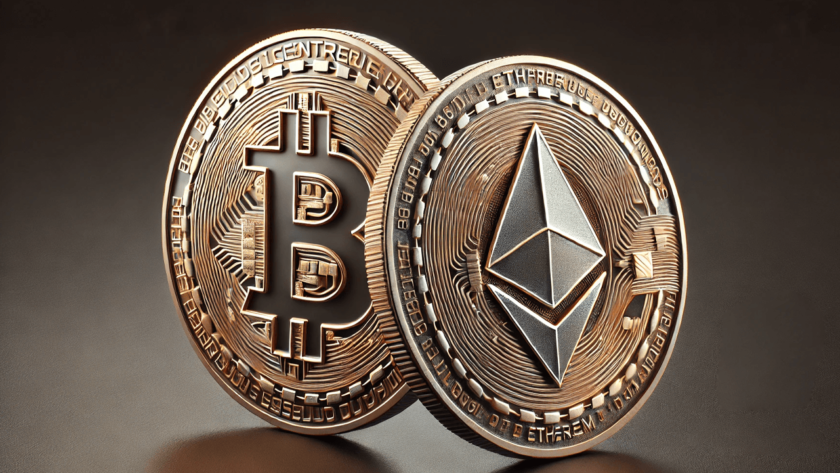Edward Woodford is the co-founder and CEO of Seed CX, which, offers a licensed exchange for institutional trading and settlement of spot digital asset products and plans to offer a market for CFTC-regulated digital asset derivatives.
The following is an exclusive contribution to CoinDesk’s 2018 Year in Review.
While 2018’s falling bitcoin prices led many observers to write off digital assets altogether, the correction should actually help force the market as a whole to mature.
That maturation is exactly what the space needs to attract more institutional investors, whose arrival en masse will improve the market for everyone by increasing liquidity, both directly, via the funds they invest, and indirectly, via the fact of their adoption. Their entry will signal to other traders that the market is stable and trustworthy.
Taking risk seriously
Between 2015 and late 2017, when the price of bitcoin was steadily rising, there was bullish euphoria in the market. Traders were willing to rely on little-known or unregulated exchanges despite the risks – the potential upside made those risks worthwhile.
In the early days, digital assets presented a unique scenario by conventional trading standards: the operational risk (risk of loss from inadequate procedures, security, and policies used to conduct operations) of trading was greater than the market risk (risk of financial loss due to the prevailing conditions of a market an investor is invested in).
Loss of some money (or digital assets) here and there to hacking, for example, could be outweighed by the fact that returns were astronomical and investors were indifferent to the price of bitcoin and other digital assets as it was increasing, exponentially, in a very short period of time. For example, bitcoin experienced a price increase of 460+ percent over the six-month period from July 1, 2017 ($2,492.60) to January 1, 2018 ($14,112.20).
Trading on platforms with very high operational risks could be entirely logical using an “adjusted” Sharpe Ratio, a risk-weighted measure. The adjusted Sharpe Ratio would take into account the return of investing in bitcoin over a period of time and the risk-free rate of investing in a risk-free asset (such as a U.S. Ttreasury bond) and determine the risk of the portfolio (market and operational risks) to determine the risk-adjusted return.
Using the example above, taking a risk-free rate of approximately 1.5 percent, the portfolio’s return, which exceeds 460 percent, and the portfolio’s risk of, let’s say, 135 percent (35 percent for market risk and 100 percent for operational risk), would yield a Sharpe Ratio of approximately three. This Sharpe Ratio would represent an attractive risk-weighted return as the return exceeds the risk by a multiple of three.
Today, returns have normalized for arbitrage opportunities as liquidity has increased across exchanges. Those who employed a purely long strategy and enjoyed exponential returns would now be experiencing losses if employing the same strategy over the last six months.
Aside from a purely directional strategy, traders will tell you that “easy returns,” such as simple arbitrage opportunities (buying the same asset on one exchange and selling it at a much higher price on another) have disappeared. When the returns they’re seeing are closer to what they’d expect from more established asset classes, traders’ willingness to accept the op-risk, or potential of losses from hacking and other preventable causes, is greatly diminished.
In short, the change to the risk-reward ratio means that exchanges are no longer given a pass for poor operations, lax security, troubling conflicts of interest, and insufficient oversight.
For example, most exchanges use a single wallet to hold assets for all participants. Even with the bulk of assets held in cold storage, a single wallet creates a tempting target for hackers and other criminals. Now, we’re seeing more exchanges introduce segmented wallet infrastructure (as at Seed CX, where we create a dedicated wallet for each exchange participant).
This attitude shift means exchanges that offer dedicated wallets and other security-focused features – those that have the lowest operational risk – will attract more institutional investors, who must consider not only financial and operational risks but also risks to their reputation when trading digital assets.
It also means exchanges have to offer the surveillance and account infrastructures required to prevent inefficient or suspect trading: trade alerts, circuit breakers, order book audit trails, and so on.
Growing sophistication
As we mentioned above, changes in the market since 2017’s rally mean that “long-only” strategies are no longer workable and “easy return” opportunities are much harder to come by because more groups are chasing the same opportunities. For example, DeVere Capital recently announced the launch of an actively managed cryptocurrency fund that will be focused on arbitrage opportunities between exchanges.
This means exchanges that want to attract and keep traders must build the infrastructure to offer more sophisticated trading strategies, including swaps, derivatives, and options, not to mention combinations of those and spot markets.
Legacy of the bear
The transformation of the market infrastructure still has an overhang of its history. In the first three quarters of 2018, hackers stole $927 million of cryptocurrency from exchanges and other trading platforms.
And while many exchanges still fall short on security measures, others are making significant strides forward. In addition to segmented wallets, we’re seeing greater use of multi-signature security (at Seed CX we require two keys, generated by independent parties, to access wallets), more enforcement of whitelisted withdrawal IP addresses, and the increased pursuit of regulatory licenses.
Two years ago, the entrance of institutional investors to the digital asset space seemed distant and unlikely. Today, thanks to falling prices, institutional investors are not only entering the market but are increasingly dictating the terms of the marketplace – to the benefit of everyone trading in it.
Glass ball and dollars image via Shutterstock.




